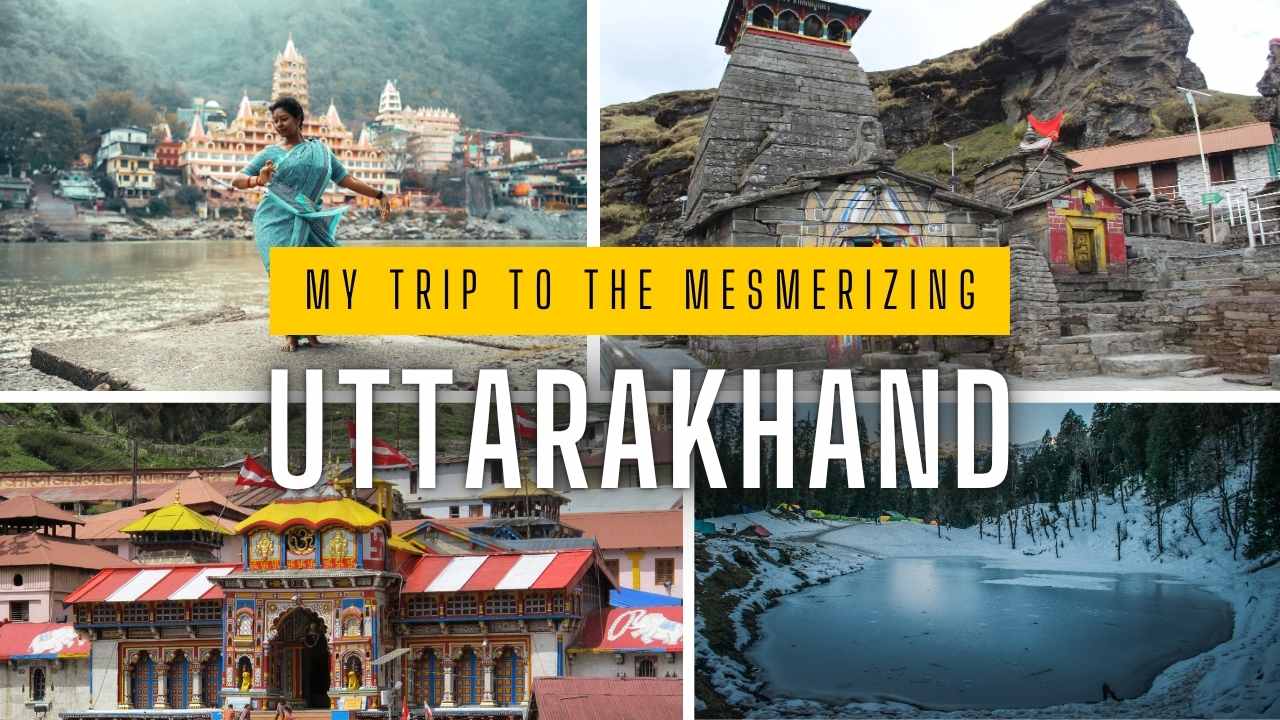Beyond Darshan: Ethical Guidelines & Responsible Tourism for Chardham Yatra Pilgrims
The **Chardham Yatra** (चारधाम यात्रा) is not merely a journey; it is a profound spiritual pilgrimage to the sacred abodes nestled in the heart of the Himalayas. For every 'यात्री' (Yatri - pilgrim), this spiritual quest also carries a deep responsibility towards preserving the sanctity, natural beauty, and ecological balance of this pristine region, often referred to as 'देवभूमि' (Devbhoomi - Land of Gods). Understanding **what are the ethical guidelines and responsible tourism practices for pilgrims on the Chardham Yatra** is crucial. Especially during the current July monsoon season, when the environment is particularly fragile, our actions, even starting from Haridwar, have a significant impact.
Pilgrimage with Purpose: Why Responsible Tourism Matters
The Himalayas are a delicate ecosystem, prone to natural calamities. Pilgrim footfall, while a source of livelihood for locals, can also put immense pressure on resources and infrastructure if not managed responsibly. Adhering to ethical guidelines ensures:
- Preservation of the Fragile Himalayan Ecosystem: Protecting its forests, rivers, and wildlife.
- Maintenance of Spiritual Sanctity: Upholding the purity and reverence of sacred sites.
- Support for Local Communities: Engaging with and benefiting local livelihoods responsibly.
- A Sustainable Future: Ensuring that future generations can also experience the divine beauty of the Dhams.
Ethical Guidelines & Responsible Practices
1. Respect the Environment & Leave No Trace ('पर्यावरण' - Environment)
- Do:
- **Carry all your waste back:** This includes plastic bottles, food wrappers, and any non-biodegradable items.
- **Dispose of waste only in designated bins:** Where available. If bins are full, carry your trash until you find a suitable disposal point.
- **Use reusable water bottles:** Refill them at purified water stations instead of buying single-use plastic bottles.
- **Stick to marked trails:** Especially during treks, to avoid damaging fragile flora and fauna.
- Don't:
- **Litter or throw waste into rivers:** The holy Ganga, Alaknanda, and Mandakini rivers are vital and should not be polluted.
- Use single-use plastics unnecessarily.
- Pluck flowers, plants, or disturb natural elements.
- Monsoon Specific: Be extra careful with waste during rain, as it can easily wash into streams and further pollute water sources. Ensure all your plastic waste is securely bagged.
2. Adhere to Spiritual & Cultural Norms
- Do:
- **Dress modestly:** Ensure your shoulders and knees are covered when visiting temples, ashrams, or interacting with locals.
- **Maintain silence and peace:** Especially in and around sacred areas and during darshan.
- **Respect local customs and traditions:** Observe what locals do and follow suit.
- **Seek permission before photographing people:** Especially women and children.
- Don't:
- Engage in loud conversations, excessive selfies, or inappropriate public displays of affection in sacred spaces.
- Consume alcohol, tobacco, or non-vegetarian food on the Yatra route. It is generally prohibited and considered culturally insensitive in this pilgrimage circuit.
3. Support Local Communities Responsibly
- Do:
- **Buy local handicrafts and products:** Purchase souvenirs, woolens, or food items directly from local vendors and artisans to support their livelihoods.
- **Utilize local services:** Hire local guides, porters, or ponywalas (pony handlers) and ensure they are paid fairly as per prevailing rates.
- **Bargain respectfully:** While bargaining is common, do so with respect, understanding that these are often the primary sources of income for local families.
- Don't: Engage in exploitative practices or contribute to informal economies that might bypass local regulations.
4. Maintain Cleanliness & Hygiene ('स्वच्छता' - Cleanliness)
- Do:
- **Use designated public toilets:** Where available.
- If in wilderness, dispose of human waste responsibly (bury it at least 6 inches deep and away from water sources).
- **Wash your hands frequently:** Use hand sanitizer, especially before eating.
- Don't:
- Defecate openly.
- Litter personal hygiene waste like tissues or wet wipes.
- Monsoon Specific: Be extra vigilant about personal hygiene and sanitation due to increased dampness and higher risk of infections during the rainy season.
5. Safety & Preparedness (An Ethical Responsibility)
- Do:
- **Be physically fit:** Ensure you are adequately prepared for the physical demands of the Yatra.
- **Carry all essential gear:** Especially monsoon-specific items like rain gear, waterproof shoes, and a well-stocked medical kit.
- **Follow instructions:** Adhere strictly to the guidelines and instructions issued by local authorities, police, and disaster management teams.
- Travel with a trusted group or organized tour operator who prioritizes safety.
- Don't:
- Take unnecessary risks, such as venturing off marked trails or attempting treks in bad weather.
- Underestimate the difficulty of the terrain, especially during rain. This puts your life at risk and can burden limited rescue resources.
- Monsoon Specific: Do not attempt treks or road travel during heavy rain or when landslide warnings are issued. Your safety is paramount, and risking it puts others (like rescue teams) at risk.
6. Respect Wildlife ('प्रकृति' - Nature)
- Do: Observe wildlife from a distance and do not disturb their natural habitat.
- Don't: Feed wild animals, as it can alter their natural behavior and lead to dependence on humans.
The **Chardham Yatra** is a sacred journey to the abode of the divine in the majestic Himalayas. By adopting these **ethical guidelines and responsible tourism practices**, pilgrims ensure not only a fulfilling spiritual experience for themselves but also contribute to the preservation of this pristine environment and its vibrant culture for future generations. May your journey be blessed, and may you leave only footprints and take back only memories.
Your Questions Answered: FAQs About Chardham Ethical & Responsible Tourism
- Q1: Why is waste management so important on the Chardham Yatra route?
A: Waste management is crucial because the **Himalayan ecosystem is extremely fragile**. Improper disposal of waste, especially plastics, pollutes rivers like the Ganga, harms wildlife, and degrades the natural beauty of the sacred region. During monsoon, litter can easily be washed into water sources, increasing contamination. - Q2: What is "Satvik Bhojan," and why is it important on the Chardham Yatra?
A: **"Satvik Bhojan" is pure, vegetarian food prepared without onion and garlic**, often found in temple kitchens and many pilgrim eateries. It is considered important because it promotes mental and physical purity, aligning with the spiritual nature of the pilgrimage and enhancing one's devotion. - Q3: Should I bargain with local vendors on the Yatra route, and how should I do it respectfully?
A: **Yes, bargaining is common with local vendors**, but it should be done **respectfully**. Remember that these livelihoods depend on pilgrim traffic. Bargain fairly, and avoid aggressive or demeaning negotiations. A small difference in price for you can mean a lot for a local family. - Q4: Is it acceptable to take photographs inside the Chardham temples?
A: **Generally, photography is strictly prohibited inside the main temple premises of the Chardham shrines**. Always look for "No Photography" signs and respect these rules. You can usually take photos of the temple exteriors and surrounding landscapes, but always be mindful of other pilgrims and local sentiments. - Q5: What is "Devbhoomi," and how does it relate to responsible tourism on the Yatra?
A: **"Devbhoomi" (Land of Gods)** is the revered term for Uttarakhand, signifying its deep spiritual importance and numerous sacred sites. This spiritual significance underpins the need for responsible tourism. Pilgrims are encouraged to behave as guests in this divine land, showing utmost respect for its nature, culture, and sanctity, leaving it as pure as they found it for future generations.







































